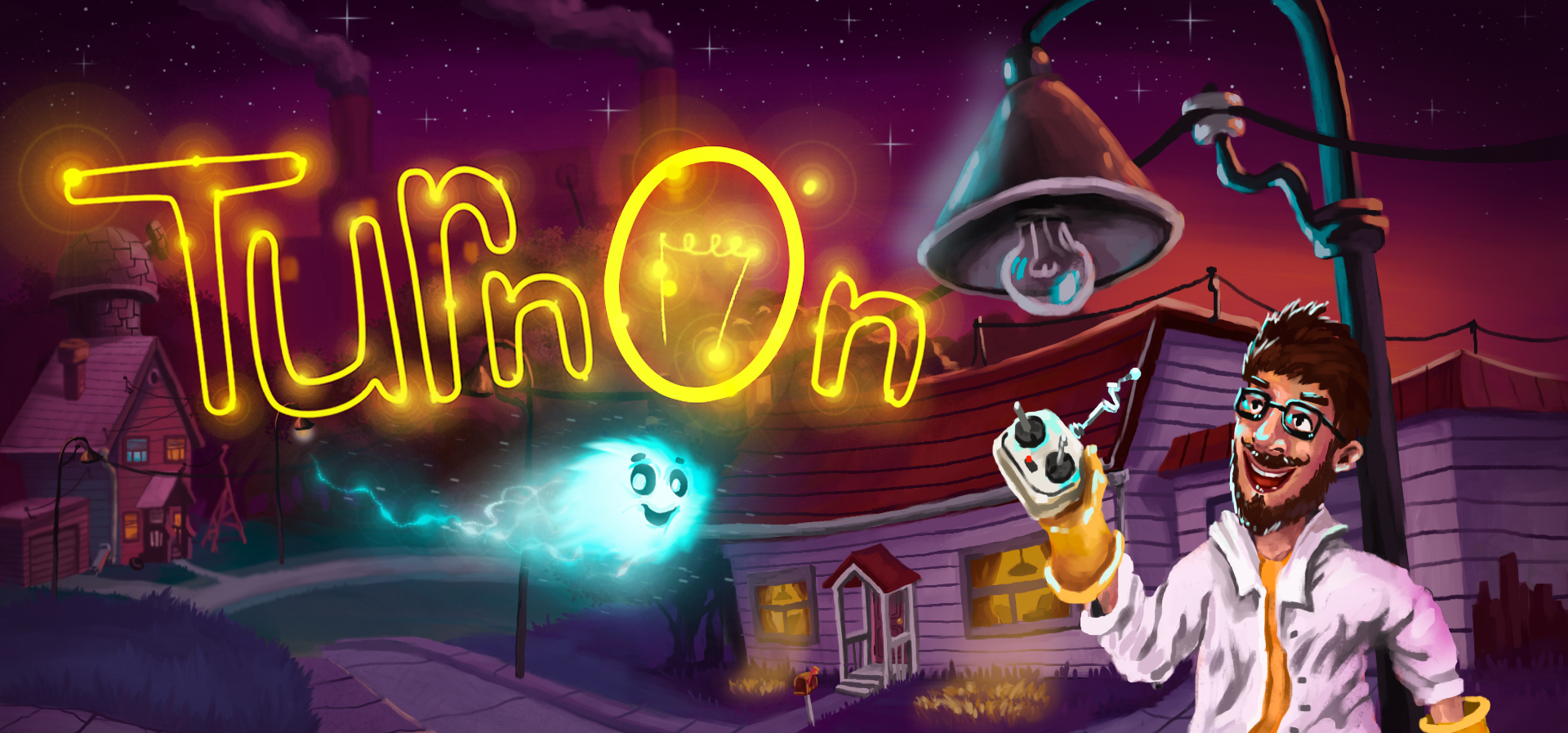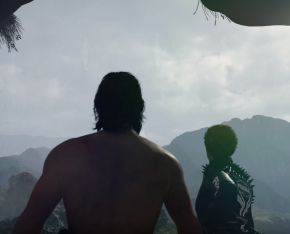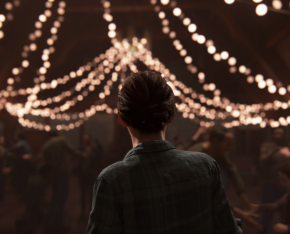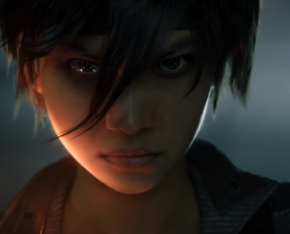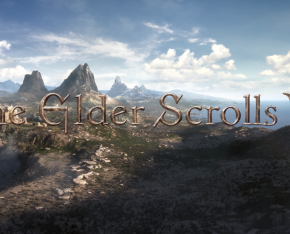By Franceen Robles on August 23, 2016 at 10:27pm
Platformer. A word that usually evokes thoughts of skillful jumps, falling into a rhythm, and barely avoiding deadly spikes. A type of game that is usually accompanied with held breaths, hushed anticipation, and clenched buttcheeks. A tooth and nail battle between the player and the game’s obstacles.
Relaxation is probably not in that list.
“TurnOn” is an interesting platformer involving slack electrical wires and slightly leaning electric poles. The product of a four-man team, Russian-based Brainy Studios, “TurnOn” features an electrical alien creature of the same name. Players control this creature as they journey to bring power back to a blackout city.
Other than having wires as platforms instead of rigid, straight planes, the game’s penchant for relaxing players lies behind its lack of dialogue and soothing soundtrack. Sound effects are limited, but for a good cause - they keep the experience free of distractions as much as possible. They easily blend in with the background, save for a few manufactured shrieks and grunts for the humans. Cutscenes are presented in a comic-book style, allowing for an easy-in-easy-out process while saving space in order to show the most number of panels.
The soundtrack, on the other hand, range from jazz-like tracks to easy-listen instrumentals. They match each stage perfectly - peaceful stages are accompanied by the soft, hushed tracks, while the slightly more stressful stages are more upbeat. Even the most touching cutscenes elicit just the right amount of emotion.
As for the gameplay itself, “TurnOn” boasts two kinds of platforming: free roam and autoscroller. Free roam stages usually require the player to fulfill some kind of small mission, ranging from helping light up the environment for a date to saving kids from a horribly failing ferris wheel. Collectibles come in the form of blue bolts and are half the requirement for getting a perfect rating for the stage. The other half involves giving power to lamps and air conditioning units strewn around the map. These two tasks provide points, which are tallied at the end of each stage and are assigned a one, two, or three light bulb rating.
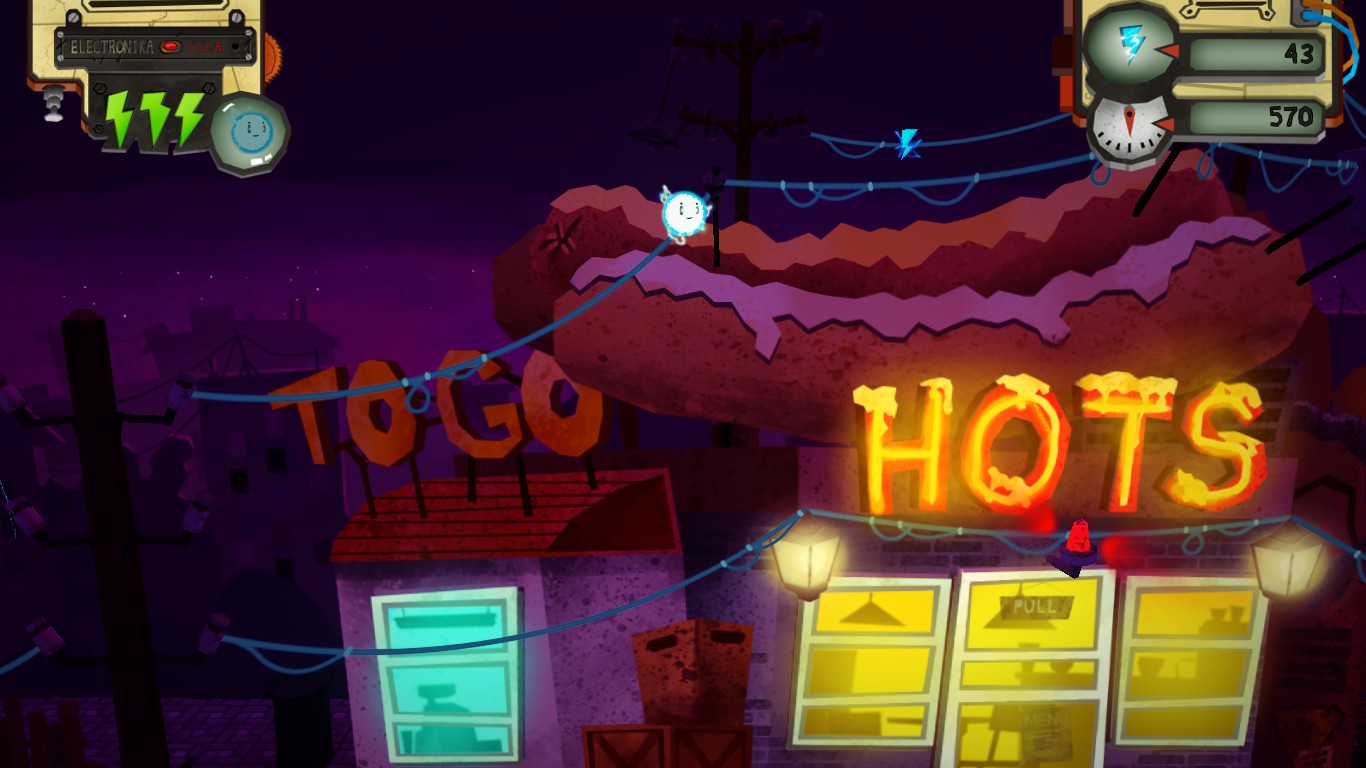
One of the more interesting concepts of the free roam stages is the way the focus shifts from foreground to background as needed. Seemingly higher and unreachable wires are usually reached by a slight leap of faith and a sudden shift of focus planes. It’s a little scary at times, especially when making a significant jump from a high plane to low plane. It’s also slightly startling at the beginning, but throughout the game it becomes second nature.
Free roam stages also does not penalize the player for making a mistake. While it’s possible to fall off the platform, the only penalty is that the player is sent back to the last checkpoint. This means having to collect the blue bolts again as well as turning appliances on. It’s not so much of a penalty, considering that a player can fall off over and over again without any other repercussions. There are no lives to keep track of and no health points to keep an eye on. Exploration is encouraged - should you fall, simply try again.
The other kind of stages come in the form of autoscrolling levels. Given its nature, the path is more straightforward and there are only a set number of platforms to worry about. The goal is the same: collect all blue bolts and reach the end of the stage.
The main difference lies in the sudden difficulty spike. It is during these stages that players must summon some quick reactions in order to quickly change platforms. The speed is never the same - they slow down and speed up according to the accompanying soundtrack. Don’t be fooled, however. Even though the jumps seem like they are in tune with the soundtrack’s rhythm, they quickly go out of sync with the music. This makes for an awkward transition from enjoying the track to quickly ignoring it in order to keep going.
Aside from the lack of rhythm even though it sometimes sounds like there is, players need to make sure that their jumps are made at a specific spot. Aside from the obvious reasoning that jumping too early will cause you to miss and fall, the character TurnOn’s animation causes a split second delay when jumping right at the end of a wire. Thankfully, the developers have been diligent in adjusting these, so it’s possible that the game will no longer have this problem in the future.
Players must also avoid the red bolts which take away one of three energies available. Green bolts replenish lost energy one at a time, but losing all three of them leads to death. There are usually more red bolts falling at a much faster pace than green bolts, and some of the red ones even take away energy before they officially appear on screen. While not completely maddening, there will be times when stages will have to be restarted grumpily because three red bolts took away all of your energy in succession.
The last problem of these autoscrolling stages is the near-rote memorization requirement. As mentioned earlier, the speed of the scrolling is never the same. This means that you must be able to react quickly in order to get the most blue bolts. There are spots throughout these stages where they practically trap a player into catching a red bolt or dying. There will be times where it’s simply too late to swerve back to safety. Even with the cleverly hidden, yet automatically occurring checkpoints throughout the stage, it’s annoying to stare TurnOn’s doom in the face and not be able to do anything about it.
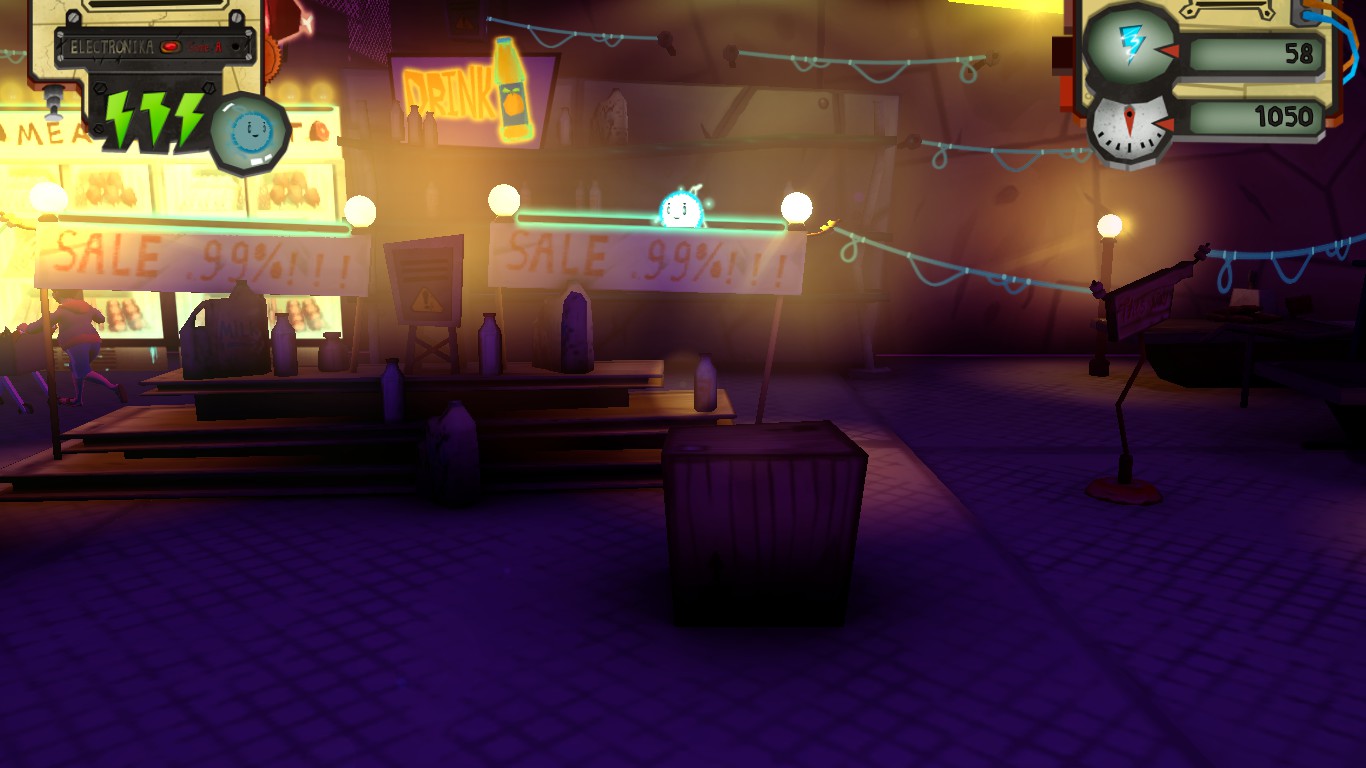
Thankfully, the graphics in “TurnOn” also contribute to the relaxing factor of the game. Considering the nature of the game - to bring light back to a blackout city - the game takes place during the night. All stages start with dimmed colors that are never dull or creepy enough to cause uneasiness. The town itself perfectly evokes a hometown feeling, what with its electric poles, houses close to each other, and townsfolk simply enjoying the nighttime.
It’s easy to just sit back, soak in the music, and take in the environment, but it gets even better when power is restored. The previously dim town suddenly regains its life back, bringing even more beauty to the night. Lights are bright, colorful, and familiar, making even the most questionable alleyway seem welcoming to its residents. It’s very satisfying to see the town light up again, thanks to your tireless efforts to hunt down every single lamp and electric poles. Pun notwithstanding, the difference between the two environments is akin to night and day.
Perhaps the most important facet of this game’s existence lies in the fact that this game is actually conveying a message about energy conservation. Even if the message is not presented right in front of your face, it’s easy to start feeling some sympathy for households without power, or to those who are unable to get food because the grocery store ran out of power. It’s no wonder that Brainy Studios, through this game, won the Games category of the 2014 Imagine Cup World Finals. It’s also no wonder that “TurnOn” won me over.
